Praise Page for Recounting the Anthrax Attacks
With a keen eye for detail, PhD scientist and former FBI agent, Scott Decker, takes the reader deep inside the governments investigation of the 2001 anthrax letter attacks.
David Willman, author, The Mirage Man: Bruce Ivins, the Anthrax Attacks and Americas Rush to War
Scott Decker gives an unprecedented look inside one of the most importantbut least understoodFBI investigations of the modern era. Every page is a real-life CSI episode, a hands-on lesson of what its like to be inside a cutting-edge, high-profile investigation and the remarkable science the FBI deployed to solve this case.
Garrett M. Graff, author, Raven Rock and The Threat Matrix: Inside Robert Muellers FBI
Decker provides a deep and detailed account of how the FBI and other federal agencies used the new field of microbial forensics as well as DNA analysis and other cutting-edge techniques to conduct one of the largest terrorism investigations in the nations history. His inside knowledge offers something for sleuths and scientists alike.
Ed Palattella, editor, Erie Times-News; author, A History of Heists: Bank Robbery in America and Pizza Bomber: The Untold Story of Americas Most Shocking Bank Robbery
This is an eye opening account of all that goes into an investigation like this, one that is a threat to all of us. As ordinary citizens we never hear about the hard work that is done to protect us from things like the anthrax threat. Scott Decker did an excellent job both with the investigation and writing about it.
Marilyn Meredith, author, The Deputy Tempe Crabtree and Rocky Bluff P.D. mystery series; serves on the board of Public Safety Writers Association
Recounting the Anthrax Attacks
Recounting the Anthrax Attacks
Terror, the Amerithrax Task Force, and the Evolution of Forensics in the FBI
R. Scott Decker
Rowman & Littlefield
Lanham Boulder New York London
Disclaimer
The opinions presented in this book are the authors and not endorsed by the Federal Bureau of Investigation or the Department of Justice.
Published by Rowman & Littlefield
A wholly owned subsidiary of The Rowman & Littlefield Publishing Group, Inc.
4501 Forbes Boulevard, Suite 200, Lanham, Maryland 20706
www.rowman.com
Unit A, Whitacre Mews, 26-34 Stannary Street, London SE11 4AB
Copyright 2018 by R. Scott Decker
All rights reserved . No part of this book may be reproduced in any form or by any electronic or mechanical means, including information storage and retrieval systems, without written permission from the publisher, except by a reviewer who may quote passages in a review.
British Library Cataloguing in Publication Information Available
Library of Congress Cataloging-in-Publication Data
978-1-5381-0149-0 (cloth)
978-1-5381-0150-6 (electronic)
 The paper used in this publication meets the minimum requirements of American National Standard for Information SciencesPermanence of Paper for Printed Library Materials, ANSI/NISO Z39.48-1992.
The paper used in this publication meets the minimum requirements of American National Standard for Information SciencesPermanence of Paper for Printed Library Materials, ANSI/NISO Z39.48-1992.
Printed in the United States of America
Without thinking of your own safety and security you responded to the scenes, stayed for weeks and never questioned the hardships, the risks, or conditions and never shirked your duty....
When the first crisis ended and the second one appeared you simply changed directions and charged straight into it. When other people were terrified of the biological terror, you simply stepped up to the plate ready to serve again....
You and I both know that no parade will ever be held in our honorbut that does not lessen your accomplishments.
Supervisory Special Agent James Rice to members of the National Capital Response Squad, Washington Field Office, FBI, December 2001
Contents
Acknowledgments
T here are many people who supported and encouraged me throughout this writing project. Edward Lake, who by keeping his Internet site up to date from the fall of 2001 through the end of 2014, chronicled the investigation. The site is a wealth of information and source of media references. I thank him for agreeing to review my manuscript for accuracy; any mistakes still remaining are completely on me. I also want to thank Tommy Harris Jr., Local 40 Ironworker (retired), for sharing his memory of the days at Ground Zero immediately following the 9/11 World Trade Center attack and for graciously sending me a copy of his excellent book about those days.
I must voice my appreciation for the friendship and support from Tom Reynolds and Greg Meyers over the years. They never turned down any of our ambitious requests as we analyzed and reanalyzed our collection of anthrax samples at Commonwealth Biotechnologies. Their dedication resulted in our first break in the investigation. I wish them all the luck with their new venture at NEXT Molecular Analytics. I am indebted to David Bostwick of Bostwick Laboratories and American International Biotechnology. It was David who first gave me the idea to write this book, and it would not have been possible without his support and encouragement for the past five years.
At the Centers for Disease Control and Prevention (CDC), Rich Meyer, Stephen Morse, and Rich Kellogg have been good friends and great colleagues over the years, especially in the early days of the Laboratory Response Network. They had the vision and put in the hard work to make it happen. The Lab Network saved us on more than one occasion following the chaos of 9/11. Thanks also to Alex Hoffmaster at the CDC for sharing his data and memories of the early days of the anthrax attacks. A thank you also to Segaran Pillai. He unselfishly allowed me use of his data from the sampling and analysis he conducted at the American Media building while he headed up the Public Health Laboratory in Miami. I must of course thank Paul Keim at the Northern Arizona University. He also never said no to whatever our requests, and there were many during the investigation. He showed immense patience and always answered my questions, regardless of how nave. Finally, my thanks go to Rita Colwell. As director of the National Science Foundation, unfailingly she gave her support to the investigation and offered her friendship. Our meetings were very productive.
I received much encouragement from the writing community as well. Richard Preston, Joby Warrick, and David Willman all shared their wisdom. And thank you to Dean King of the James River Writers for convincing me that my story about Ground Zero should be told. Several people helped me understand the writing process. Linden Gross guided me through the basics, and Lise Funderburg acted as coach and mentor. Jenny Johnston, an excellent writer and editor, taught me about structure, brevity, and keeping it light. A special thanks goes to those at Creative Nonfiction : Lee Gutkind, Hattie Fletcher, and their staff. They showed me that nonfiction writing is more than reporting results and documenting history; it can have life. A special thank you goes to Ed Palattella for introducing me to his editor, Kathryn Knigge, at Rowman & Littlefield. Kathryn became my editor, and I am grateful to her for believing in my project. A big thank-you also goes to Elaine McGarraugh, senior production editor at Rowman & Littlefield. Both have been especially easy to work with, consummate professionals, and always have time for my impromptu telephone calls.
At the FBI and Postal Service there are many that supported me. In particular, kudos to Scott Stanley and Richard Langham for doing a fine job in advancing anthrax genetics. And Tom Dellafera for being there and listening, no matter how dumb my ideas might have sounded. To Tom Devlin and Paul Jaskot, who I worked and partnered with in the FBIs Boston office and then again when we drew assignments at Quantico and FBI Headquarters. I learned a lot from them. At the FBIs Washington Field Office Jim Rice and John Perren stand out. Jim is a true patriot and always put his agents first. And as John rose through the ranks to become an assistant director, he always had time to talk.
Next page
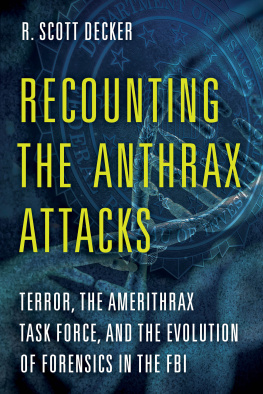
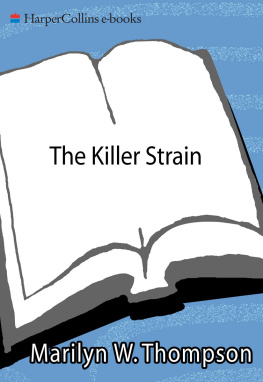



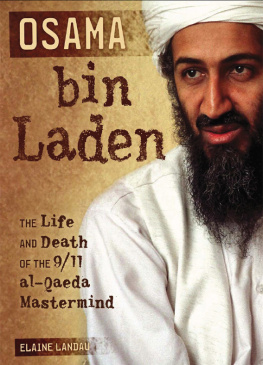

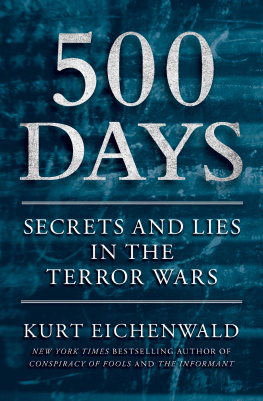
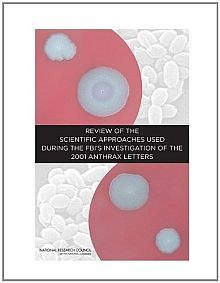
 The paper used in this publication meets the minimum requirements of American National Standard for Information SciencesPermanence of Paper for Printed Library Materials, ANSI/NISO Z39.48-1992.
The paper used in this publication meets the minimum requirements of American National Standard for Information SciencesPermanence of Paper for Printed Library Materials, ANSI/NISO Z39.48-1992.